Noctua Introduces Intel Alder Lake Low-Profile Coolers
Noctua today expanded its family of low-profile CPU coolers with the LGA 1700-bound NH-L9i. The NH-L9i-17xx and NH-L9i-17xx chromax.black join the legendary NH-U12A chromax.black in bringing Noctua coolers to Intel's latest 12th gen, Alder Lake CPUs. At 37mm height, the low-profile nature of these coolers make them particularly apt for building ultra-compact HTPCs and Small Form Factor (SFF) systems.
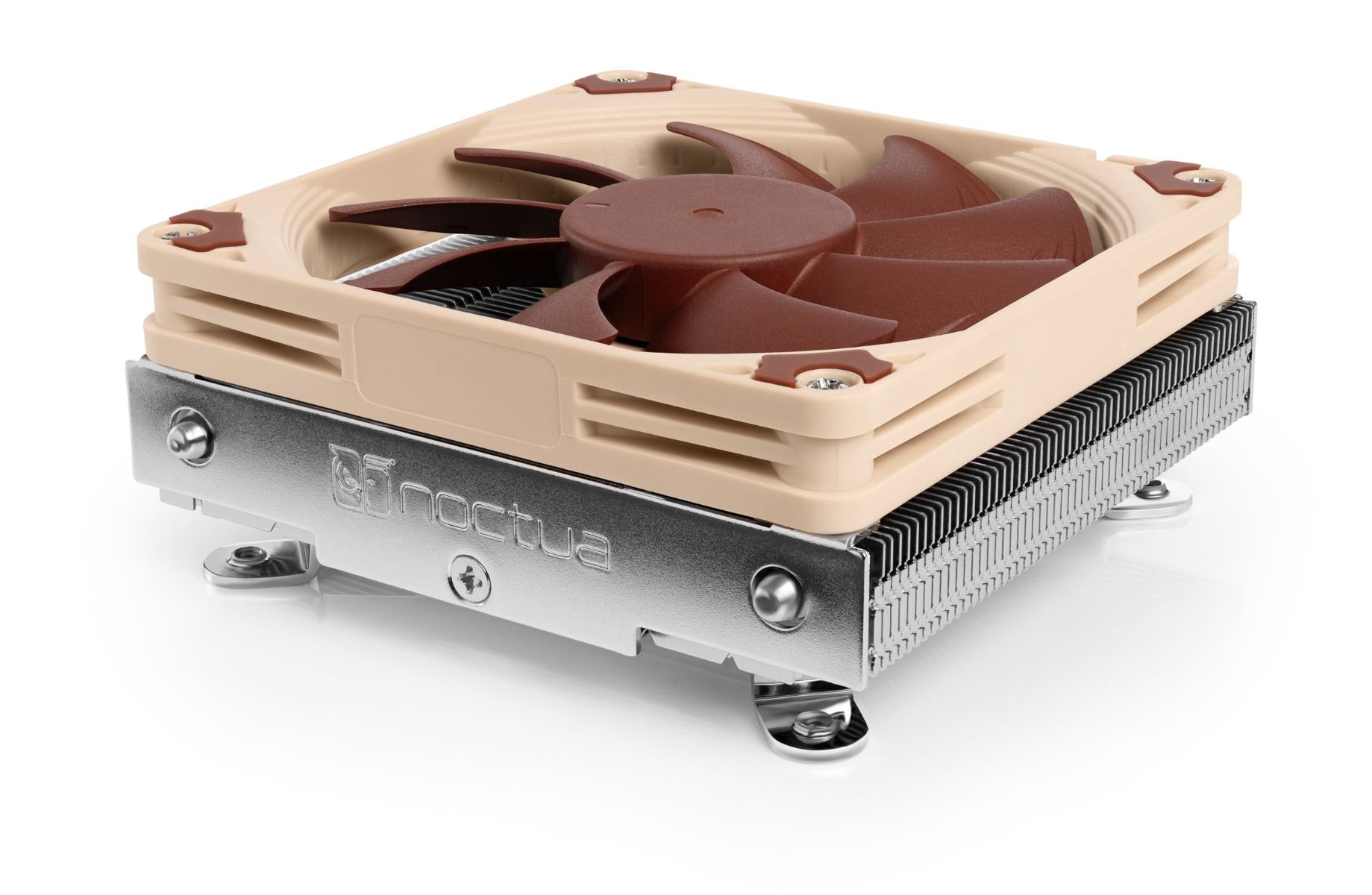
The Noctua NH-L9i-17xx
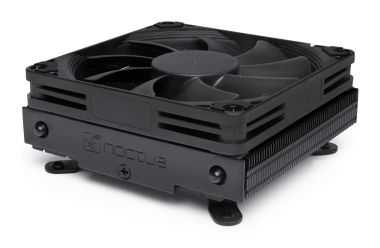
The Noctua NH-L9i-17xx chromax.black
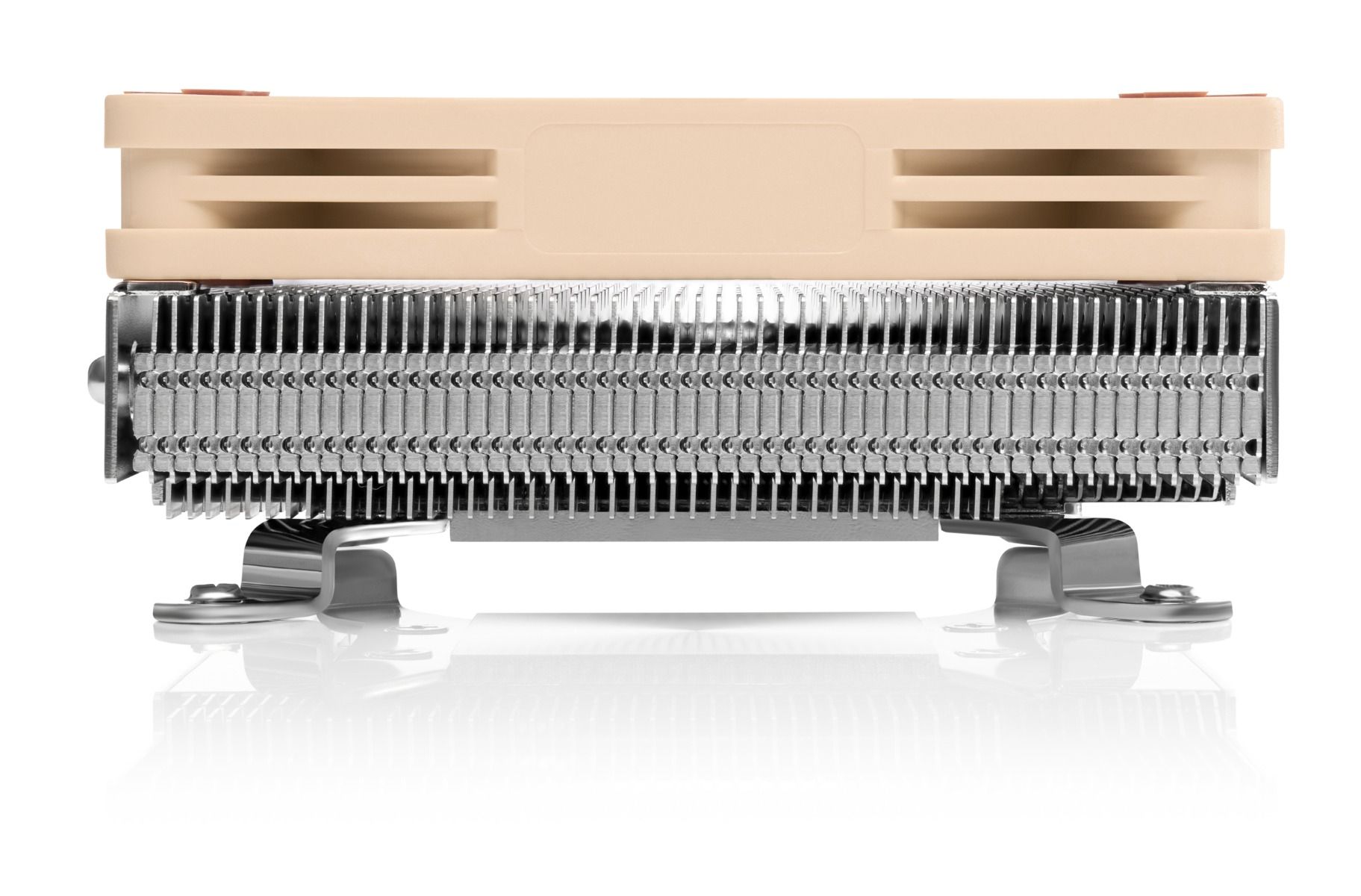
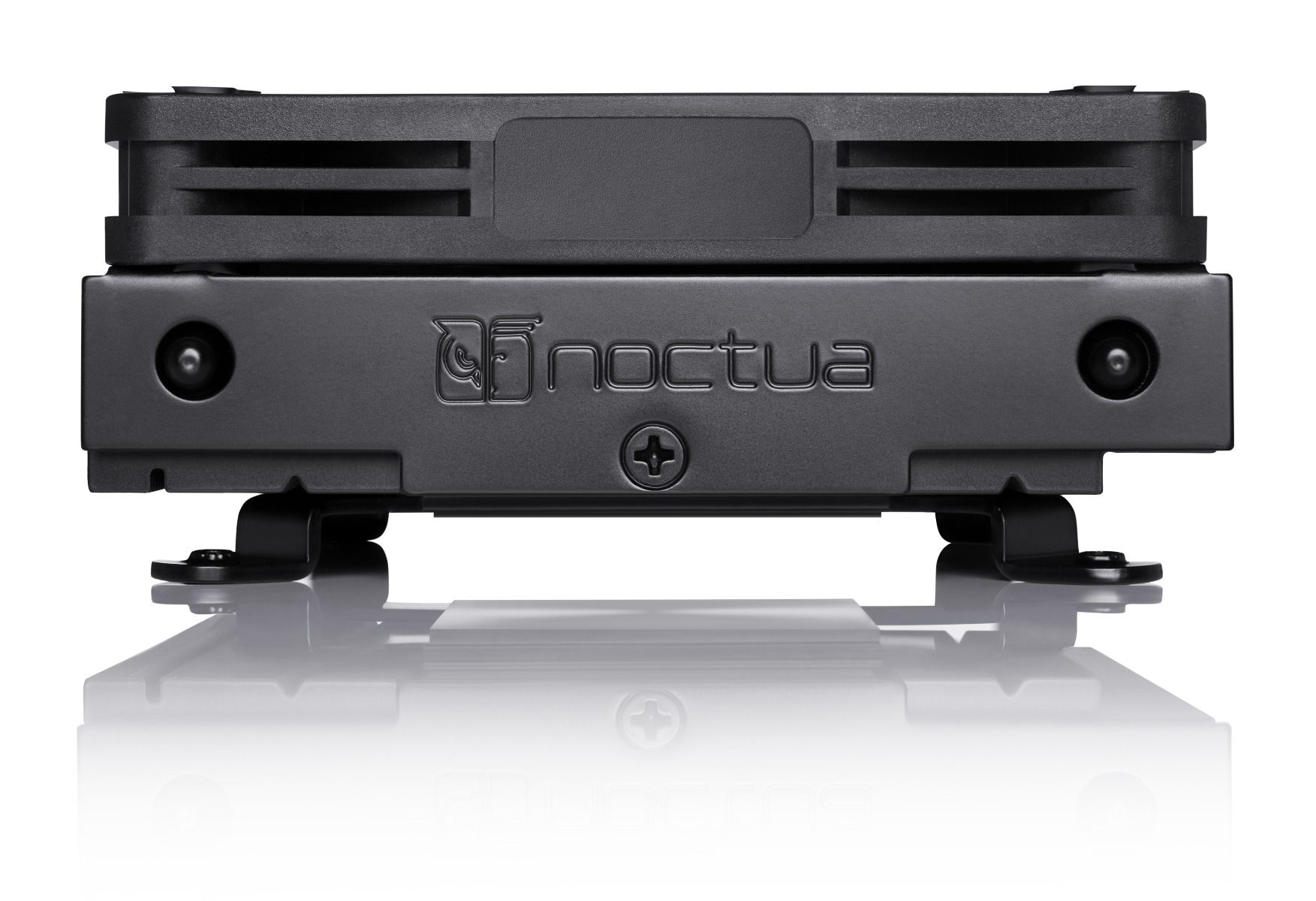
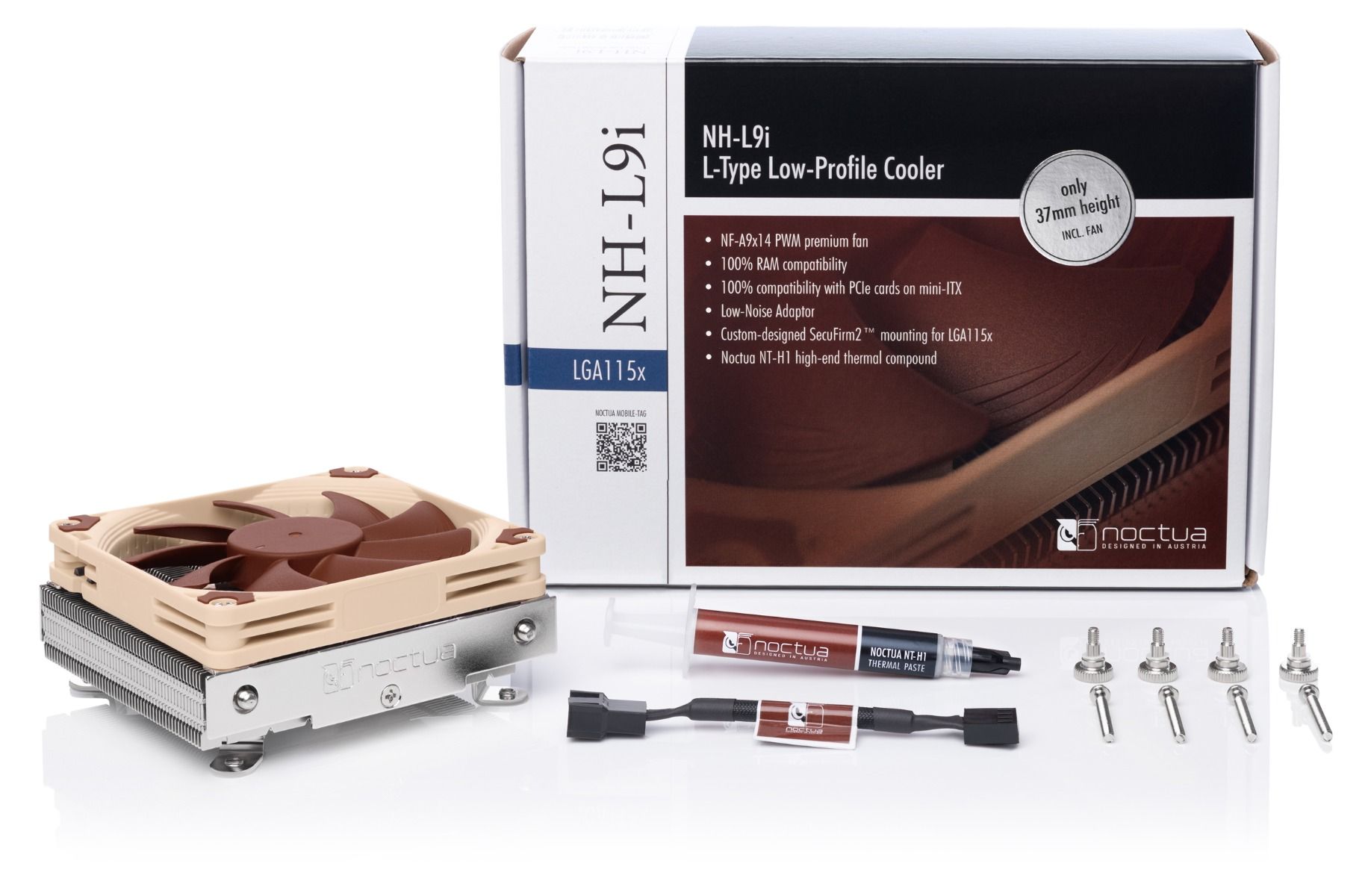
The Noctua NH-L9i-17xx kit
The NH-L9i-17xx follows Noctua's design philosophy, with a two-tone brown fan assembly on top of a silver cooler. The NH-L9i-17xx chromax.black, however, brings a more inconspicuous (and easier to color-coordinate) all-black design. Packing Noctua's NF-A9x14 92mm fan, the NH-L9i-17xx support automatic fan speed control via PWM for a cooling system that adapts to on-the-fly, or it can be modified according to a users' preferred sound profile.
The NH-L9i-17xx has been designed to stay out of the way of your RAM and PCIe components even on tightly packed motherboards. Noctua's custom-designed SecuFirm2 mounting system (especially developed for the new LGA1700 socket) simplifies installation and extends compatibility to multi-socket mounting system. NH-L9i-17xx is compatible with all modern Intel (LGA1700, LGA1200, LGA115x, LGA2011, LGA2066) and most AMD sockets (AM4, AM3, AM2, FM1, FM2).
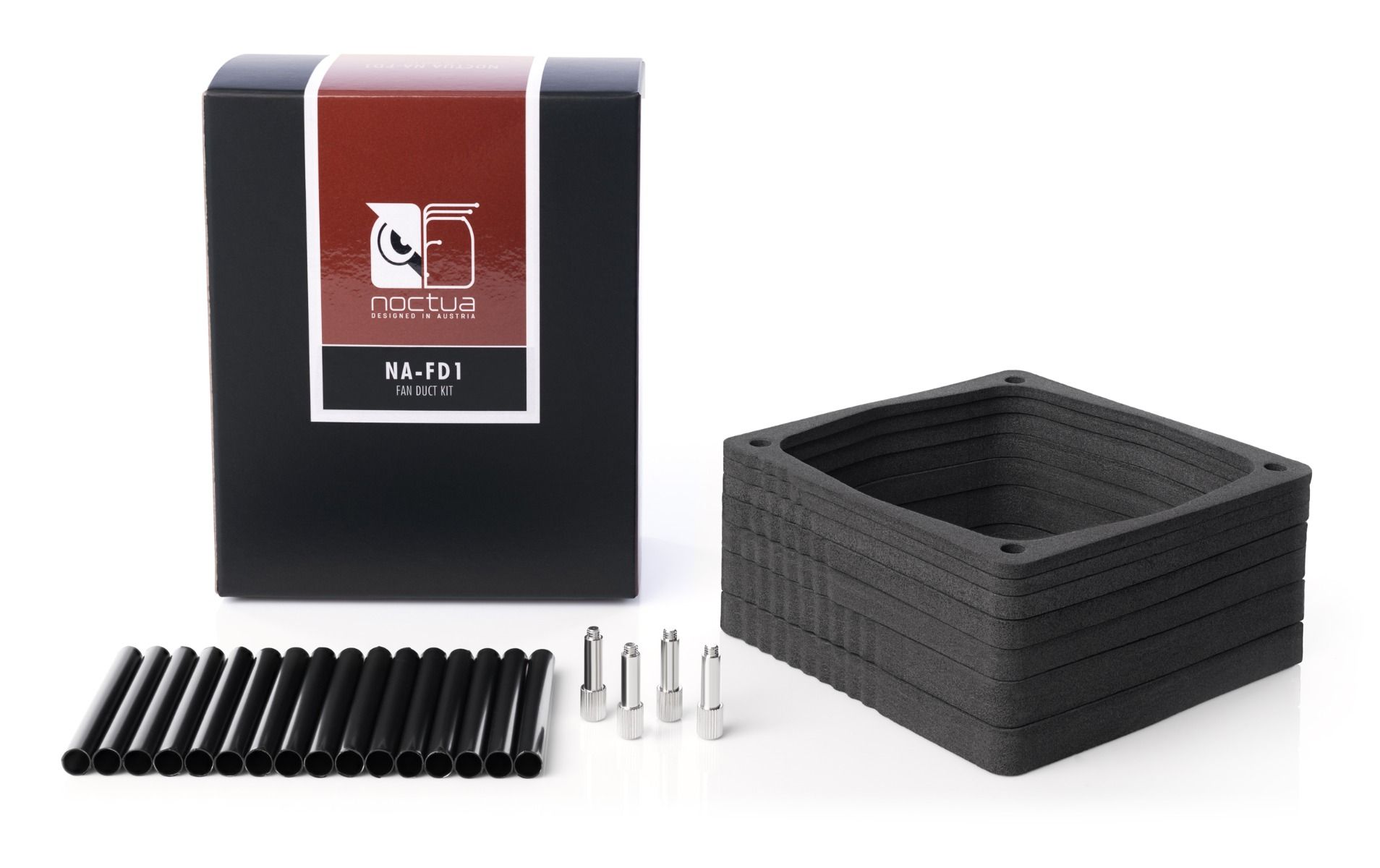
The NA-FD1 duct kit
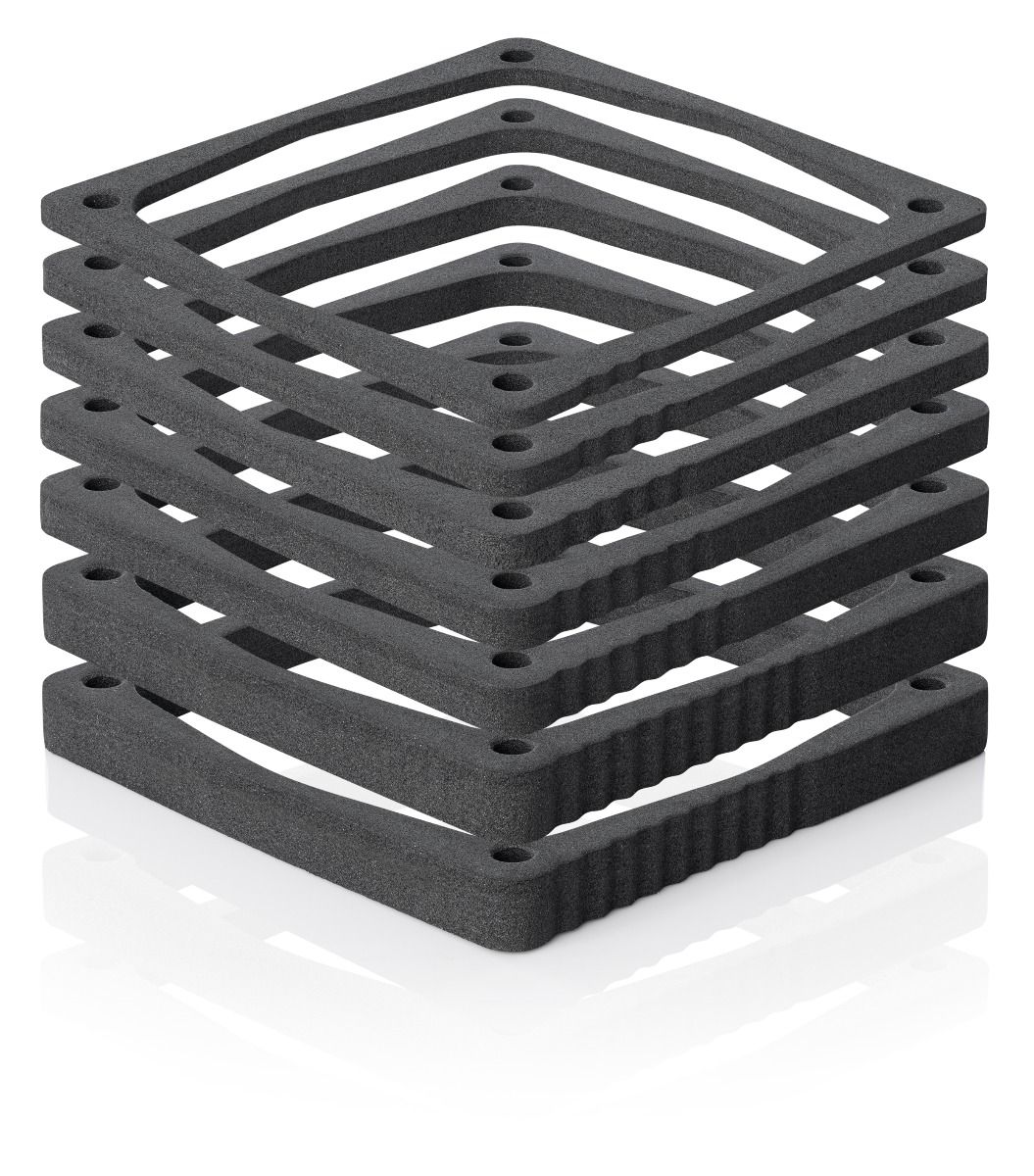
Besides the new NH-L9i-17xx coolers, Noctua is also launching a new fan duct accessory kit. The NA-FD1 fan duct kit enables users to create a corridor through which cool air can be more easily pulled from outside. According to Noctua, the new fan duct kit measurably improves cooling performance of the NH-L9i-17xx coolers - Noctua mentions a 5 Celsius lower operating temperatures in its materials). The duct is particularly effective on systems with a minimum 5mm gap between the top of the cooler (37mm) and the casing (a minimum of 42mm is thus required for optimal performance), up to a limit of 45mm height. The duct itself is made of EVA foam spacers, which can be stacked in 1mm increments up to the maximum 45 mm height.
“For Small Form Factor builds, we now highly recommend the optional NA-FD1 fan duct kit, both to customers choosing the new NH-L9i-17xx models and to users of the existing NH-L9i and NH-L9a heatsinks”, explains Roland Mossig, Noctua CEO. “It’s a simple yet highly effective way of boosting the performance of these coolers in compact cases. Tech-savvy enthusiasts have been creating similar ducts with their 3D printers for quite some time, but not everyone has the capabilities to do this, so we thought it would be great to offer an affordable, flexible duct kit that doesn’t require any special equipment or skills to set up.“
All of the products are already available through Noctua's website. Noctua's suggested retail prices are set at EUR/USD 44.90 for the NH-L9i-17xx; EUR/USD 54.90 for the all-black NH-L9i-17xx chromax.black; and EUR/USD 12.90 for the NA-FD1 duct kit.
Get Tom's Hardware's best news and in-depth reviews, straight to your inbox.

Francisco Pires is a freelance news writer for Tom's Hardware with a soft side for quantum computing.
-
-Fran- I hate to say this, but it smells like BS.Reply
Look at the ratings they use for the L9i and how it stacks up and then their own somewhat contradictory information in the page. Their internal score is 59 vs 183 for the NH-D15 which was proven to throttle the i9 12900K. Here's the link to how they calculate that: https://noctua.at/en/noctua-standardised-performance-rating
So, in their own page (here: https://ncc.noctua.at/coolers/NH-L9i-17xx-71/cpus/Intel/LGA%201700) it says it works better to boost the 12900K over the 12700K? How does that work? How can this thing help boost the 241W monster and not thee 190W one at the same level? The wattage differences among those CPUs are not trivial or small enough to ignore their information.
You guys should ask for some clarification, because even if it's Noctua, this smells really fishy.
Regards. -
TerryLaze Reply
The 12700k has 400Mhz more on the p-cores and 300Mhz more on the e-cores under all core so it needs a better cooler because it creates more heat in the same space.Yuka said:So, in their own page (here: https://ncc.noctua.at/coolers/NH-L9i-17xx-71/cpus/Intel/LGA 1700) it says it works better to boost the 12900K over the 12700K? How does that work? How can this thing help boost the 241W monster and not thee 190W one at the same level? The wattage differences among those CPUs are not trivial or small enough to ignore their information.
Also as you can see by the little turbo icon that the cooler is for medium turbo boosting and not for the "balls to the walls i don't care" setting.
it's not for 240 all the time it's for close to that some times or lower than that all the times.
According to computerbase you don't need 240 anyway to get extremely good performance out of the 12900k. -
-Fran- Reply
Christ...TerryLaze said:The 12700k has 400Mhz more on the p-cores and 300Mhz more on the e-cores under all core so it needs a better cooler because it creates more heat in the same space.
Also as you can see by the little turbo icon that the cooler is for medium turbo boosting and not for the "balls to the walls i don't care" setting.
it's not for 240 all the time it's for close to that some times or lower than that all the times.
According to computerbase you don't need 240 anyway to get extremely good performance out of the 12900k.
This is not about Intel, it's about their product (Noctua's) and how they're portraying its capabilities. Go read it before you make any comments.
Regards. -
TerryLaze Reply
Yes, and noctua says that it's not made for the full 240W, what's your problem?!Yuka said:Christ...
This is not about Intel, it's about their product (Noctua's) and how they're portraying its capabilities. Go read it before you make any comments.
Regards. -
-Fran- Reply
I explained it in my first post.TerryLaze said:Yes, and noctua says that it's not made for the full 240W, what's your problem?!
I'll stop here.
Regards. -
TerryLaze Reply
Are you like forgetting the things you write before you end the post or something?Yuka said:I explained it in my first post.
I'll stop here.
Regards.
I was answering your questions.
" it says it works better to boost the 12900K over the 12700K? How does that work? "Yuka said:So, in their own page (here: https://ncc.noctua.at/coolers/NH-L9i-17xx-71/cpus/Intel/LGA 1700) it says it works better to boost the 12900K over the 12700K? How does that work? How can this thing help boost the 241W monster and not thee 190W one at the same level? The wattage differences among those CPUs are not trivial or small enough to ignore their information.
By the 12700K having higher clocks at the same size surface.
"How can this thing help boost the 241W monster and not thee 190W one at the same level? "
By not cooling for the full TMP in the first place, and stating a medium turbo/overclocking headroom and not the full turbo power. -
According to Noctua:Reply
“We’re very happy with the performance of the NH-L9i-17xx coolers on Intel’s new LGA1700 CPUs”, says Roland Mossig (Noctua CEO). “We have managed to dissipate up to around 160W on the Core i9-12900K, pushing it to over 4.2GHz, and up to 125W on the Core i5-12600K running at 4.3GHz. These are excellent results for such small coolers, making them fantastic options for highly compact Intel Z690 builds that pack a lot of processing power!”
Emphasis mine.
So the new cooler cools better the hotter the CPU is.
How does that work? I don't know, I'm not a physicist, and thermodynamics is way outside my expertise. -
TerryLaze Reply
These are not overclocking fans so it stands to reason that they did use the base power settings, we also don't know what they ran, the 12600k has fewer cores so if they ran the same workload on both, not the max heaviest stuff, the 12600k could have maxed out at 125.Nolonar said:According to Noctua:
Emphasis mine.
So the new cooler cools better the hotter the CPU is.
How does that work? I don't know, I'm not a physicist, and thermodynamics is way outside my expertise.
They DO say pushed for the 12900k while they just say running for the 12600k.